As a holistic veterinarian, I’ve spent years studying the unique health issues of various dog breeds. One breed that’s particularly close to my heart is the Bloodhound. Known for their incredible sense of smell and gentle, loving nature, Bloodhounds are a joy to have as part of the family. However, they also have a unique set of health concerns, particularly when it comes to their eyes.
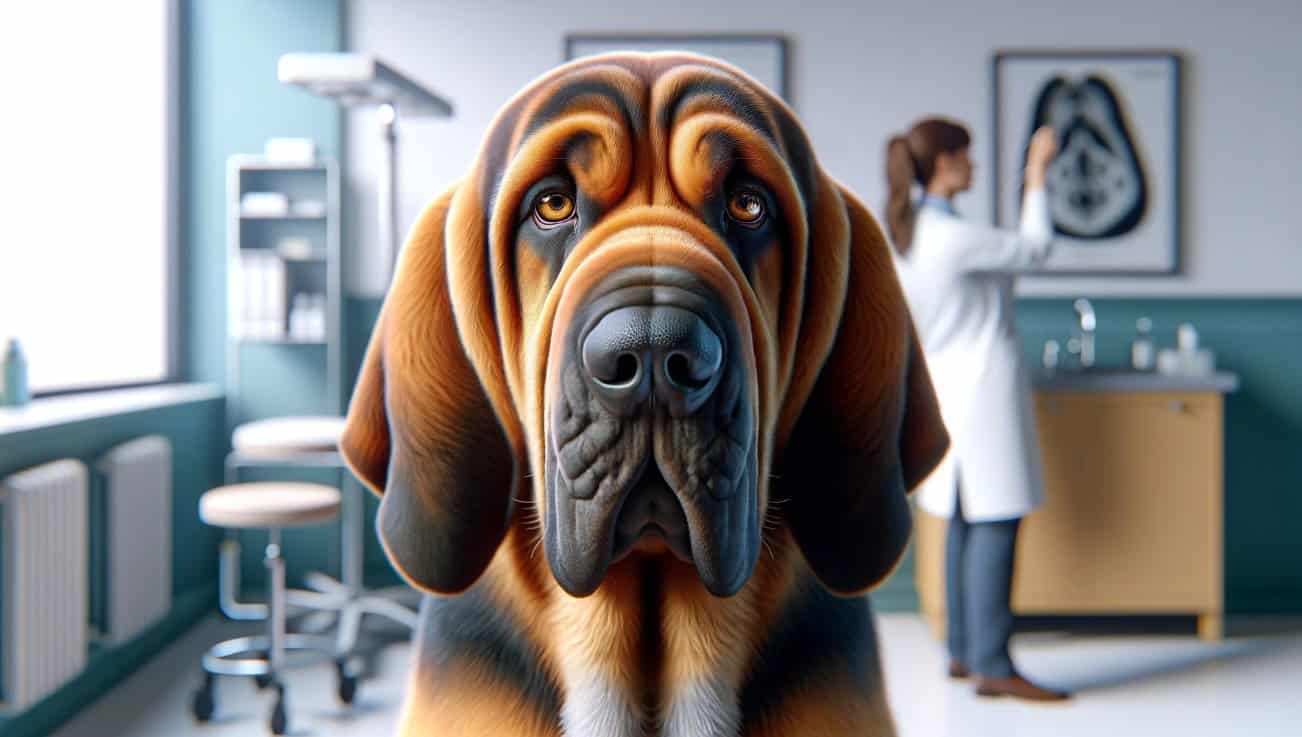
Bloodhound Eye Health is a topic I’ve devoted a lot of time to. These dogs have a distinctive eye structure that can make them prone to certain conditions. But don’t worry, I’m here to guide you through everything you need to know about these eye issues, how to prevent them, and how to keep your Bloodhound’s eyes healthy and clear.
From understanding the specific eye structure of the Bloodhound, to identifying common eye problems, to holistic prevention methods and routine care, we’ll cover it all. So, whether you’re a seasoned Bloodhound owner or considering adopting one, you’ll find this guide invaluable. Remember, the more you know about Bloodhound Eye Health, the better equipped you’ll be to ensure your furry friend enjoys a life full of sniffing, playing, and seeing the world in all its glory. So, let’s get started!
Understanding Breed Specific Eye Structure
When it comes to maintaining your beloved Bloodhound’s health, understanding their unique eye structure is a crucial first step. This knowledge can help you identify potential issues early and prevent serious complications. Let’s dive into the fascinating world of Bloodhound eyes!
Bloodhounds, known for their superior tracking skills, have a distinctive eye structure that sets them apart from other breeds. Their eyes are usually deep-set and almond-shaped, surrounded by loose, wrinkled skin. This droopy appearance is not just for show; it serves a functional purpose. The loose skin helps to trap and funnel scent particles towards their nose, enhancing their extraordinary sense of smell.
However, this unique eye structure also comes with certain health implications. The loose skin around their eyes can sometimes lead to a condition called ectropion, where the lower eyelid droops or rolls out. This can expose the inner eyelid and cause dryness, irritation, and potential infections. On the other hand, Bloodhounds can also suffer from entropion, where the eyelid rolls inward, leading to discomfort and possible injury from the lashes rubbing against the cornea.
Their deep-set eyes are also more prone to developing ocular disorders such as cherry eye, where the gland of the third eyelid prolapses and becomes visible, and Progressive Retinal Atrophy (PRA), a group of genetic diseases that lead to the degeneration of the retina.
Furthermore, Bloodhounds have a higher risk of developing glaucoma, a condition characterized by increased pressure in the eye that can lead to blindness if not treated promptly. Their eyes are also susceptible to dry eye syndrome, a condition where the eyes do not produce enough tears for adequate lubrication, leading to discomfort and potential vision loss.
Now that we’ve explored the unique eye structure of Bloodhounds and the potential health implications, it’s easier to understand why regular eye check-ups and proactive eye care are so crucial for this breed. By staying informed and proactive, you can help ensure your Bloodhound’s eyes remain healthy and bright for years to come.
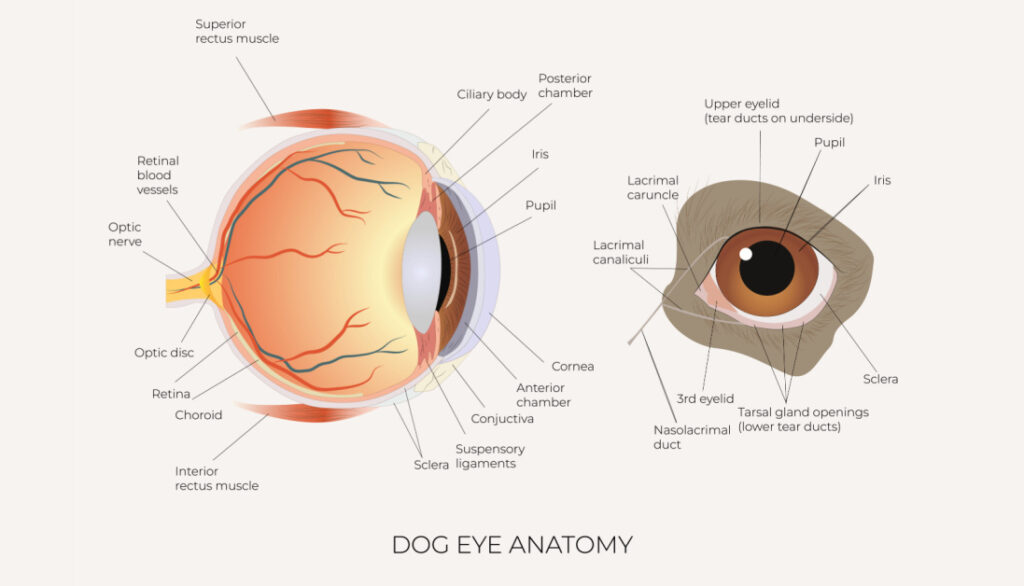
Common Eye Issues In Bloodhounds
As a veterinarian, I often encounter multiple Bloodhound Eye Health concerns. This breed’s unique physical characteristics, especially their droopy eyes, make them susceptible to various eye conditions. Let’s delve into these common eye issues.
Entropion
Entropion is an inherited condition where the eyelid rolls inward. This causes the eyelashes to rub against the cornea, leading to discomfort, irritation, and potential corneal injury. Bloodhounds are particularly prone to this condition due to their droopy eyelids.
Ectropion
Ectropion, another common condition in Bloodhounds, is the opposite of Entropion. It occurs when the lower eyelid droops or rolls out, exposing the inner eyelid and leading to various complications like dry eyes and infections.
Keratoconjunctivitis Sicca (KCS)
Also known as dry eye, KCS is a condition where the dog’s eye doesn’t produce enough tears. This can lead to dry, itchy eyes, and if left untreated, can result in corneal ulcers and even vision loss. Bloodhounds are predisposed to this condition, making regular eye check-ups essential for this breed.
Cherry Eye
Another common Bloodhound Eye Health issue is Cherry Eye. It occurs when the gland in the dog’s third eyelid prolapses, creating a cherry-like appearance in the corner of the eye. Although it doesn’t typically affect vision, it can cause discomfort and needs veterinary attention.
Corneal Ulcers
Corneal Ulcers are often a result of trauma to the eye or secondary to conditions like Entropion. If your Bloodhound is squinting, has watery eyes, or seems to be in pain, they may have a corneal ulcer.
It’s crucial to remember that early detection of these Bloodhound Eye Health issues can prevent more serious complications. Therefore, regular check-ups with a veterinarian are indispensable for maintaining your Bloodhound’s eye health. If you notice any changes in your dog’s eyes, such as redness, swelling, or discharge, seek immediate veterinary care.
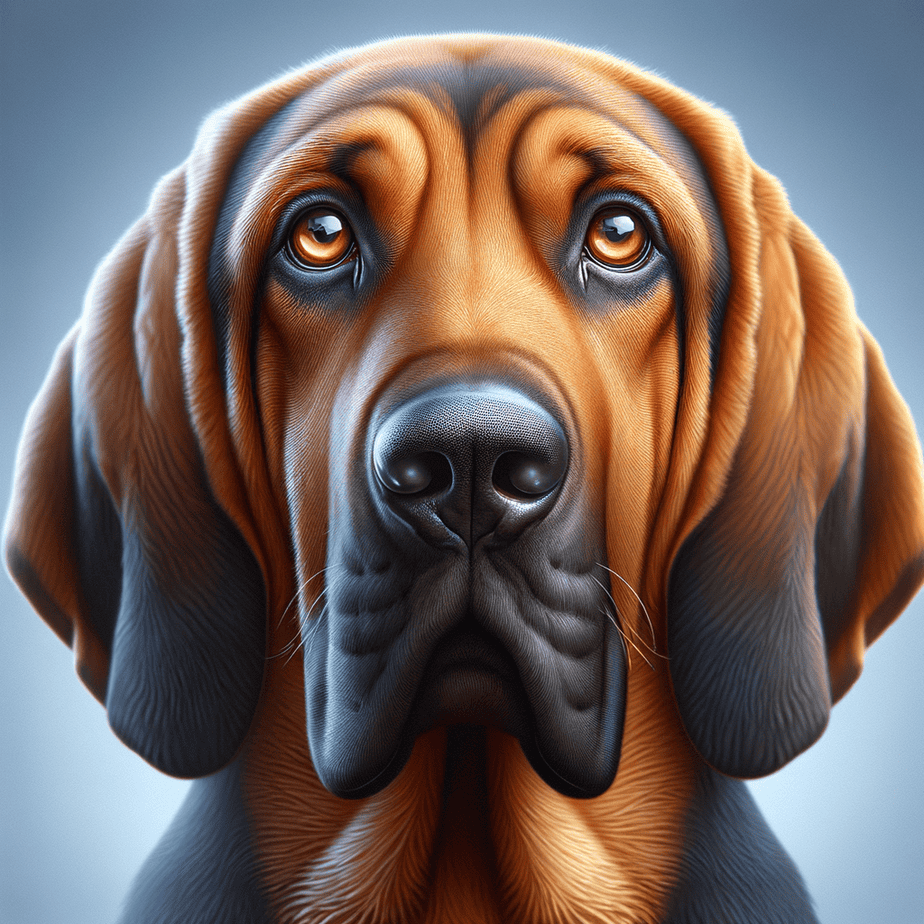
Prevention of Eye Problems
Ensuring your Bloodhound gets the right nutrients for optimal eye health is essential for maintaining clear vision and preventing age-related issues. Natural, nutrient-rich foods and supplements can play a key role in supporting their eyesight. From vitamin A-packed freeze-dried liver treats to antioxidant-rich blueberries and targeted supplements like Eyeplex by Standard Process, there are several ways to nourish your dog’s eyes. In this section, we’ll explore how these powerful ingredients contribute to long-term vision health and overall well-being.
Eyeplex by Standard Process
Eyeplex by Standard Process is a specialized supplement designed to support your Bloodhound’s eye health with a blend of essential nutrients. Formulated with key vitamins, minerals, and antioxidants, Eyeplex helps protect against oxidative stress, supports retinal function, and promotes overall vision health. Ingredients like vitamin A, vitamin C, and zinc contribute to maintaining strong eyesight, while whole food ingredients provide additional phytonutrients for cellular protection. Adding Eyeplex to your Bloodhound’s diet can be especially beneficial for aging dogs or breeds prone to eye conditions, offering targeted nutritional support to keep their vision sharp and healthy for years to come.
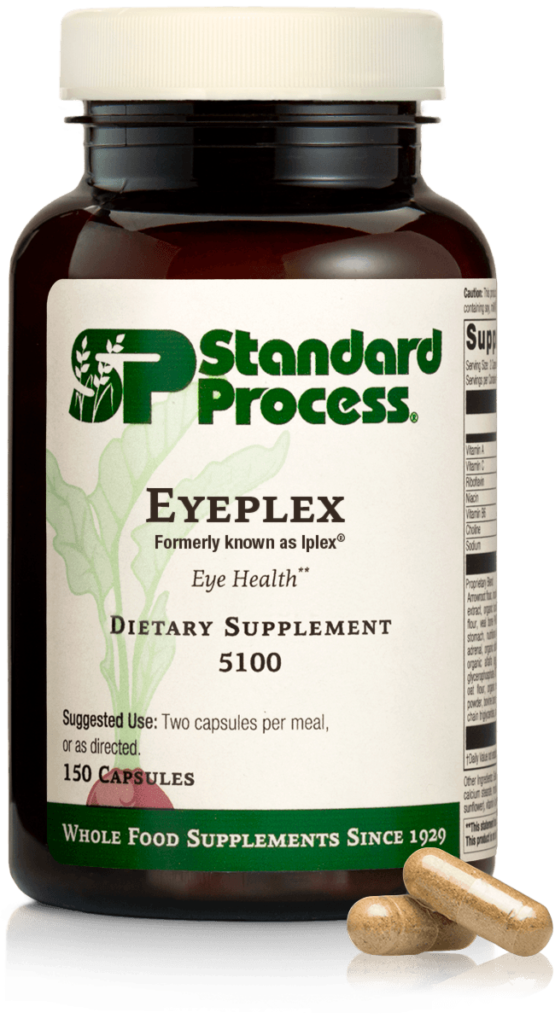
Freeze-Dried Blueberries
Freeze-dried blueberries are a powerhouse of antioxidants that can help protect your Bloodhound’s eyes from oxidative stress and age-related damage. Rich in vitamins C and E, as well as anthocyanins, these tiny but mighty berries help combat free radicals that can contribute to eye diseases like cataracts and macular degeneration. Incorporating freeze-dried blueberries into your dog’s diet provides a natural and delicious way to support retinal health, reduce inflammation, and promote overall vision longevity. Plus, they’re a low-calorie, dog-friendly treat that makes a great addition to a balanced diet for long-term eye health.
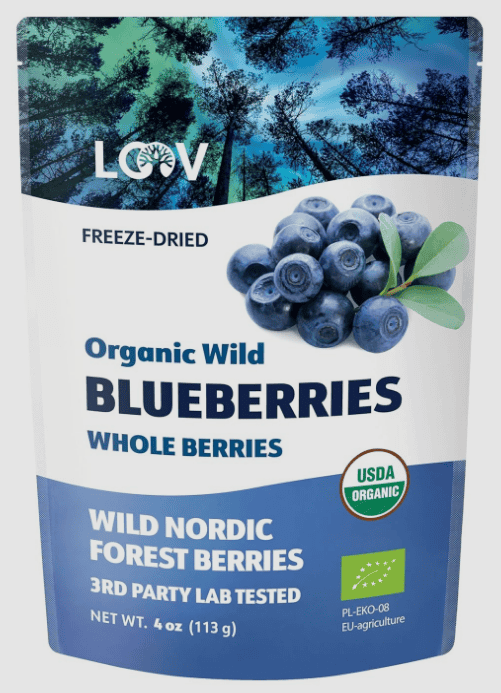
Freeze-Dried Liver
Freeze-dried liver treats are an excellent natural source of vitamin A, an essential nutrient for your Bloodhound’s eye health. Vitamin A plays a crucial role in maintaining good vision, especially in low-light conditions, while also supporting overall immune function and skin health. Since liver is rich in bioavailable vitamin A, incorporating freeze-dried liver treats into your dog’s diet provides a convenient and nutritious way to promote optimal eye function. Just be sure to feed them in moderation, as excessive vitamin A can lead to toxicity. Adding these nutrient-packed treats to your pup’s routine is a simple, tasty way to support their long-term vision and well-being!
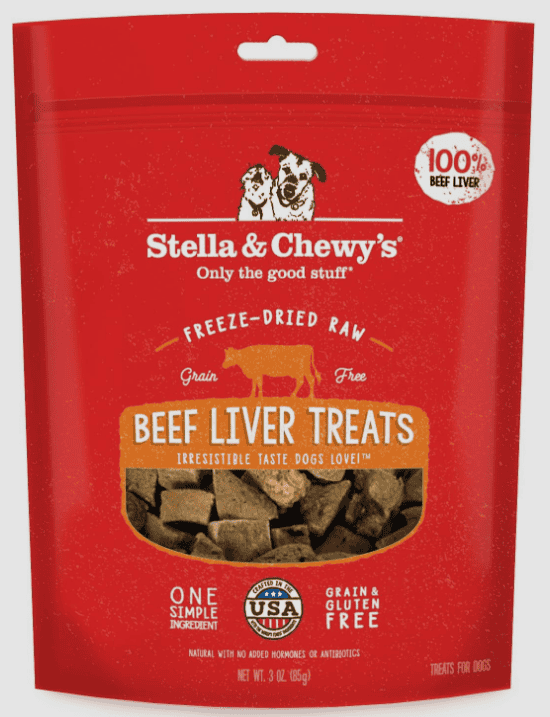
By prioritizing your Bloodhound’s eye health through a balanced diet and nutritional supplements, you can help prevent many common eye issues. These simple steps can go a long way in ensuring your pup’s eyes stay healthy and clear for years to come.
Environmental Hygiene To Reduce Eye Problems
As a loving parent to a Bloodhound, you understand the importance of maintaining a clean and safe environment for your furry friend. This is particularly crucial when it comes to their eye health. Certain environmental factors can significantly impact your dog’s eyes, leading to discomfort and potential health issues. Let’s explore some ways to ensure a hygienic environment that promotes Bloodhound Eye Health.
Indoor Air Quality
The air quality in your home plays a significant role in your Bloodhound’s eye health. Dust, smoke, and other airborne irritants can cause eye irritation, leading to various eye problems. Regularly cleaning your home, using air purifiers, and ensuring proper ventilation can help maintain good indoor air quality. Here are a few tips:
- Regular Vacuuming: This helps get rid of dust and pet dander that may irritate your Bloodhound’s eyes.
- Air Purifiers: These devices can help remove allergens and pollutants from the air, reducing the risk of eye irritation.
- Ventilation: Ensure your home is well-ventilated to prevent the build-up of irritants that can affect your dog’s eyes.
Sprays, Diffusers, Candles, Incense
While sprays, diffusers, candles, and incense can make your home smell great, they can also contribute to eye irritation in your Bloodhound. Many of these products contain chemicals that can irritate your dog’s eyes if they come in contact with them. If you must use these products, consider the following:
- Choose Natural Products: Opt for products made from natural ingredients, as they are less likely to irritate your Bloodhound’s eyes.
- Placement: Place these products away from your dog’s reach and in areas where they don’t usually hang out to minimize exposure.
- Ventilation: Ensure the room is well-ventilated when using these products to prevent a build-up of irritants.
Remember, Bloodhound Eye Health is not just about treating symptoms when they arise, but also about preventing potential issues. By maintaining a clean and safe environment, you can significantly reduce the risk of eye problems in your Bloodhound and ensure they live a happy, healthy life.
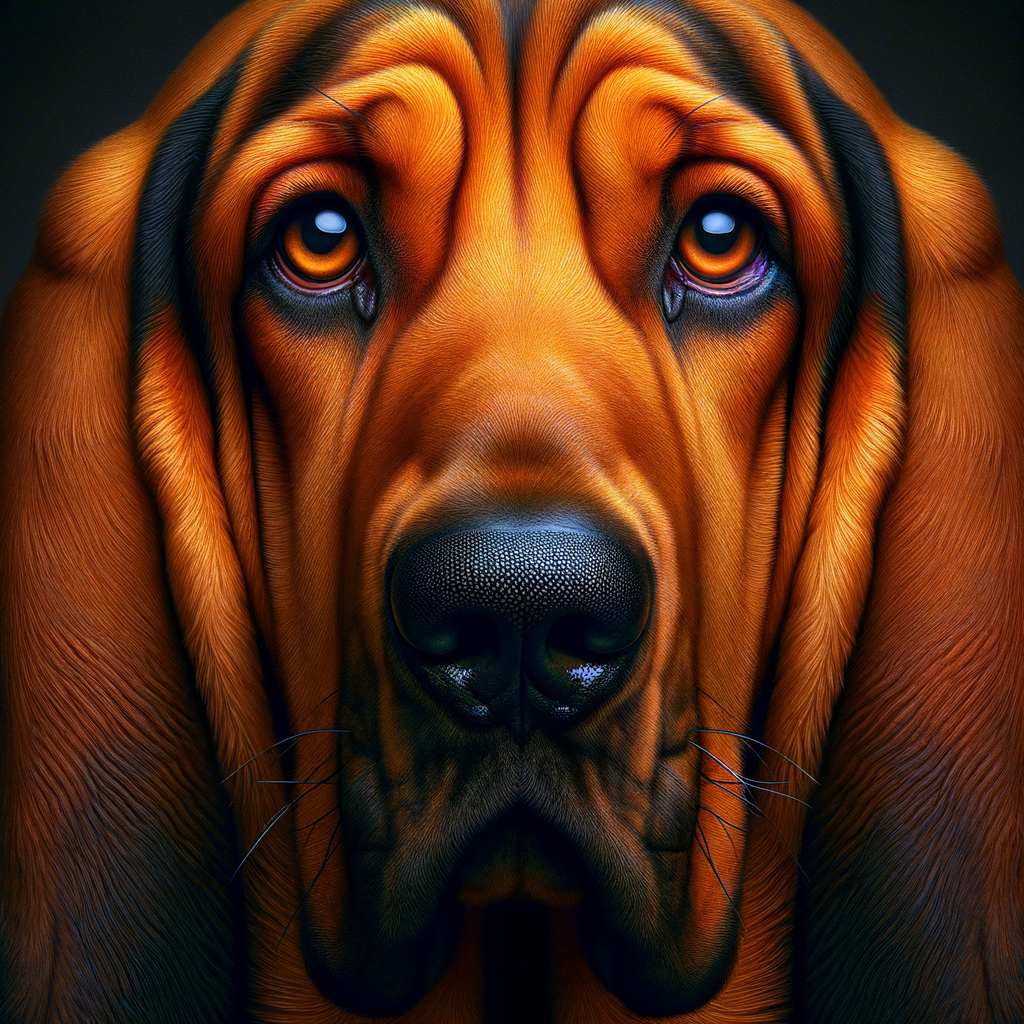
Routine Bloodhound Eye Care & Maintenance
As a proud Bloodhound parent, one of your key responsibilities is to ensure the optimal eye health of your beloved pet. Regular eye care and maintenance can prevent common eye problems that might affect your Bloodhound. Let’s discuss how to take care of your Bloodhound’s eyes on a daily and weekly basis, and why maintaining their hair and nail length, as well as their bath frequency, is vital.
Daily & Weekly Care & Maintenance
It’s essential to regularly inspect your Bloodhound’s eyes for any signs of redness, inflammation, or discharge. Wipe their eyes gently with a damp, soft cloth every day to keep them clean and free from any foreign objects. Use a veterinarian-approved eye rinse once a week to flush out any irritants, and to keep their eyes moist.
Also, remember to check for any changes in their eyes, such as cloudiness, which might be a sign of cataracts. If you notice any unusual signs, consult with a vet immediately. Taking these steps regularly will help maintain the overall eye health of your Bloodhound.
Monitor Hair Length, Nail Length, Bath Frequency
While it might not seem obvious, maintaining your Bloodhound’s hair and nail length can significantly contribute to their eye health. Long hair can irritate their eyes and cause infections, while long nails can accidentally scratch their eyes. Regular grooming sessions will ensure that their hair and nails are kept at a safe length.
Regular baths are also crucial as they help remove any allergens or irritants that might have attached to your Bloodhound’s coat, preventing them from reaching their eyes. However, be careful not to get soap or shampoo in their eyes during bath time, as this can cause irritation.
To sum up, maintaining your Bloodhound’s eye health involves a combination of daily eye cleaning, weekly rinsing, regular grooming, and careful bathing. By following these steps, you can help prevent common eye diseases and ensure your Bloodhound’s eyes stay healthy and bright. Remember, if you notice any unusual signs or symptoms, always consult with a vet promptly. Your Bloodhound’s eyes are a window to their overall health, and taking good care of them is an essential part of being a responsible and loving pet parent.
Frequently Asked Questions
1. What are common eye conditions in Bloodhounds?
Bloodhounds are prone to various eye conditions such as entropion, ectropion, cherry eye, and dry eye.
2. What is entropion and how is it treated?
Entropion is a condition where the eyelid rolls inward, causing the eyelashes to rub against the cornea. It can be treated through surgical correction to reposition the eyelid.
3. What is ectropion and how is it treated?
Ectropion is a condition where the eyelid droops or sags outward, leaving the inner surface of the eyelid exposed. Mild cases may not require treatment, but severe cases can be corrected through surgery.
4. What is cherry eye and how is it treated?
Cherry eye is a condition where the gland in the third eyelid becomes prolapsed and appears as a red mass in the corner of the eye. It usually requires surgical intervention to reposition the gland.
5. How is dry eye treated in Bloodhounds?
Dry eye, or keratoconjunctivitis sicca, occurs when the eyes do not produce enough tears. Treatment typically involves the use of artificial tears, ointments, or medications to stimulate tear production.
